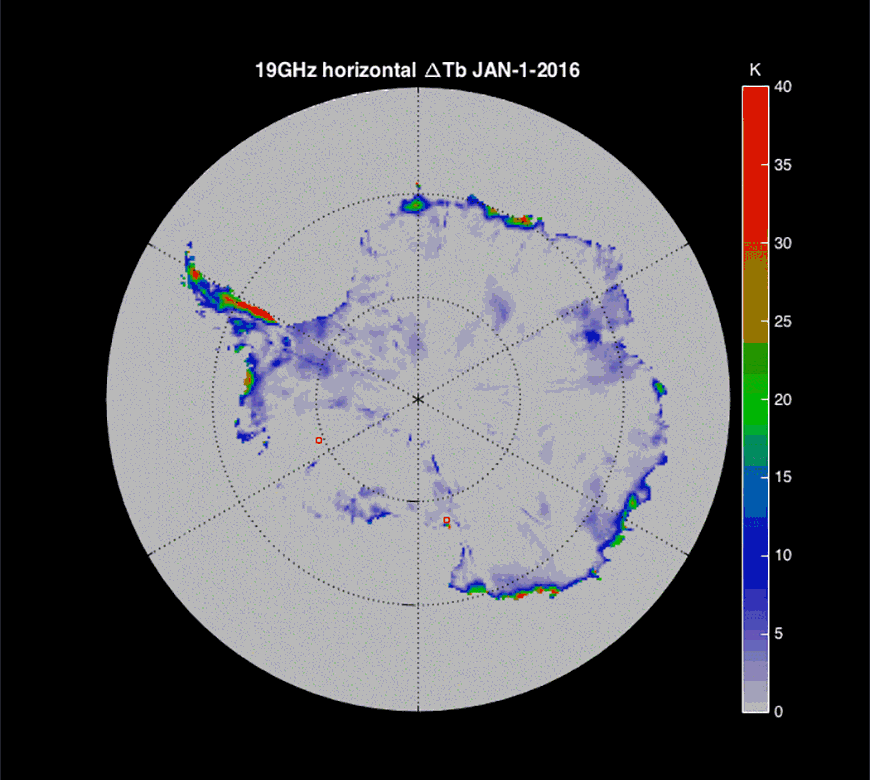
In this GIF image, the history of a surface melt episode in January 2016 in the midst of a strong El Niño austral summer. The data come from the ARM West Antarctic Radiation Experiment (AWARE), led by Scripps Institution of Oceanography at UC San Diego research physicist Dan Lubin, that undertook the most extensive meteorological survey of Antarctica in a half century. AWARE concluded in January 2017 but has inspired additional study of large-scale surface melt events in Antarctica during the satellite record. Scripps researcher and AWARE team member Ryan Scott was able to use observations from NASA’s Electrically Scanning Microwave Radiometer (ESMR) to extend the recorded history of Antarctic melt events back to December 1972. Combining the melt data from 1972-2017 with satellite cloud, surface radiative budget, and atmospheric reanalysis data, Scott is investigating the meteorological drivers of Antarctic surface melt from local processes and surface energy changes driving melt to their linkages with tropical and polar climate variability. The Department of Energy also recently awarded $900,000 to fund AWARE-inspired research that will characterize Antarctic cloud physics and dynamics, a topic on which scientists have scant data currently.